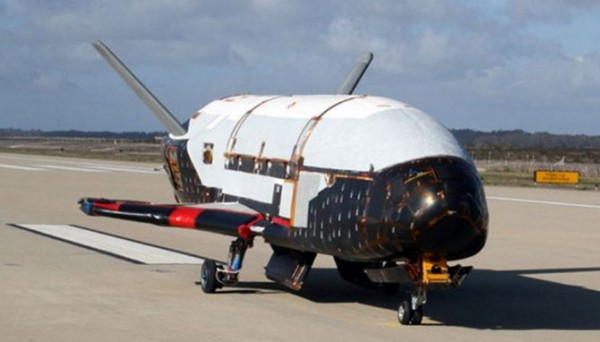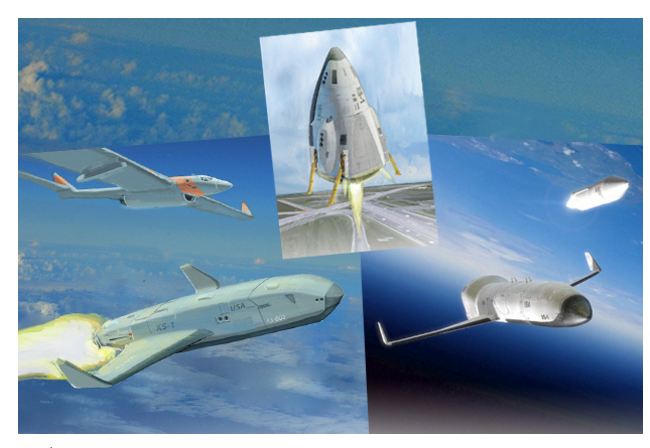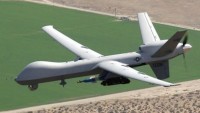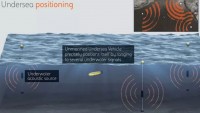US Steps-up Work on DARPA XS-1 and X-37B Military Spaceplane Projects
| Arthur Dominic Villasanta | | Jun 13, 2016 11:18 PM EDT |
(Photo : USAF) X-37B of the USAF.
Lost in the publicity surrounding DARPA's XS-1 spaceplane is that another and much more secretive military space plane, the Boeing X-37B, has been carrying out top secret space missions for the U.S. Air Force since 2011.
The X-37B is a small, robot space plane 8.8 meters long and 2.9 meters tall that has flown four times into space since its maiden flight on April 22, 2010. Its precise purpose is still classified but what's been notable about the X-37B is its fantastic endurance.
Like Us on Facebook
On its third flight from December 2012 to October 2014 (designated USA-240), the X-37B set the record for the longest mission by a reusable space vehicle: 674 days. The true purpose of this flight was unknown and most X-37B payloads are classified.
The fourth X-37B mission or USA-261 was launched on May 20, 2015 and is ongoing. This mission will not break the 674 day record of USA-240 since the USAF revealed a mission time of only 200 days.
In contrast to the secrecy surrounding previous X-37B flights, the USAF announced USA-261 will test a Hall Effect thruster in support of its Advanced Extremely High Frequency communications satellite program. It will also conduct a NASA investigation for testing various materials in space.
The X-37B is also known as the Orbital Test Vehicle (OTV) and there are two flyable prototypes of the OTV.
In 2014, however, media speculated the X-37B is testing reconnaissance and spy sensors to determine how far they can withstand radiation and other low Earth orbit (LEO)dangers. Another report claimed the X-37B might be a spy satellite or a "space bomber" that can launch weapons from space at ground targets. The Pentagon has denied this space bomber claim.
The Experimental Spaceplane (XS-1) project of the U.S. Defense Advanced Research Program Agency is intended to launch military satellites into LEO as cheaply as possible. This May, DARPA issued an official call for proposals for the XS-1.
The goal of the XS-1 project is to build a reusable space plane that can fly 10 times in 10 days at a cost of no more than $5 million per flight.
The XS-1 program began in 2013. DARPA wants the first space flight of the XS-1to occur in 2019 or 2020.
TagsDARPA, XS-1 spaceplane, Boeing, X-37B, U.S. Air Force, Experimental Spaceplane
©2015 Chinatopix All rights reserved. Do not reproduce without permission
EDITOR'S PICKS
-

Did the Trump administration just announce plans for a trade war with ‘hostile’ China and Russia?
-

US Senate passes Taiwan travel bill slammed by China
-

As Yan Sihong’s family grieves, here are other Chinese students who went missing abroad. Some have never been found
-

Beijing blasts Western critics who ‘smear China’ with the term sharp power
-

China Envoy Seeks to Defuse Tensions With U.S. as a Trade War Brews
-

Singapore's Deputy PM Provides Bitcoin Vote of Confidence Amid China's Blanket Bans
-

China warns investors over risks in overseas virtual currency trading
-

Chinese government most trustworthy: survey
-

Kashima Antlers On Course For Back-To-Back Titles
MOST POPULAR
LATEST NEWS
Zhou Yongkang: China's Former Security Chief Sentenced to Life in Prison

China's former Chief of the Ministry of Public Security, Zhou Yongkang, has been given a life sentence after he was found guilty of abusing his office, bribery and deliberately ... Full Article
TRENDING STORY

China Pork Prices Expected to Stabilize As The Supplies Recover

Elephone P9000 Smartphone is now on Sale on Amazon India

There's a Big Chance Cliffhangers Won't Still Be Resolved When Grey's Anatomy Season 13 Returns

Supreme Court Ruled on Samsung vs Apple Dispute for Patent Infringement

Microsoft Surface Pro 5 Rumors and Release Date: What is the Latest?














